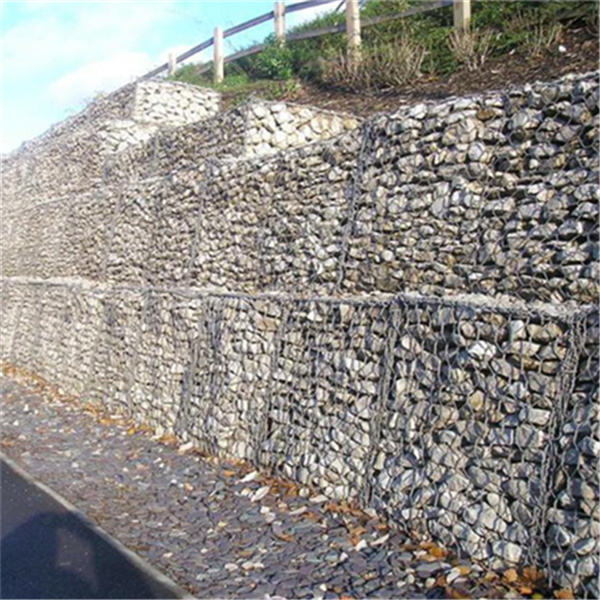Nov . 24, 2024 08:05 Back to list
gabion wall plants
Enhancing Gabion Walls with Plants A Natural Solution for Stability and Aesthetics
Gabion walls, which consist of cages filled with rocks or other materials, are increasingly popular in landscaping and erosion control. They provide robust solutions for soil retention and can be aesthetically pleasing. However, to enhance their visual appeal and ecological value, integrating plants with gabion walls has become a trending practice. This article explores the benefits of incorporating vegetation into gabion walls, suitable plant choices, and the best practices for successful implementation.
Benefits of Using Plants with Gabion Walls
The integration of plants into gabion walls offers numerous benefits. Firstly, it adds a natural aesthetic to what might otherwise be a stark, industrial-looking structure. The combination of natural stone and greenery can blend seamlessly into a variety of landscapes, enhancing the overall beauty of gardens, parks, and urban environments.
Secondly, plants contribute to the structural stability of gabion walls. Their root systems help to hold the soil in place, reducing erosion further and improving the longevity of the wall itself. A well-planted gabion wall can better withstand harsh weather conditions, including heavy rain and wind.
Additionally, the vegetation can improve biodiversity by providing habitats for birds, insects, and other wildlife. This ecological benefit can transform a simple gabion wall into a thriving mini-ecosystem, promoting the health of local flora and fauna.
Suitable Plant Choices for Gabion Walls
Choosing the right plants is crucial for the success of a vegetated gabion wall. Native plants are often the best choice, as they are well adapted to the local climate and soil conditions, require less maintenance, and support local wildlife.
1. Ground Covers Low-growing plants like creeping thyme, sedum, or creeping phlox can effectively cover the surface of gabion walls. These plants not only provide aesthetic appeal but also help to prevent soil erosion on the wall.
2. Drought-Resistant Perennials Plants such as lavender, echinacea, and ornamental grasses can thrive in rocky substrates, making them ideal for gabion walls. Their deep roots help stabilize the soil, while they require minimal watering once established.
gabion wall plants

3. Climbing Plants Vines such as wisteria, honeysuckle, and climbing hydrangea can be trained to grow on gabion walls, creating stunning vertical gardens. They not only add beauty but also provide shade and shelter for wildlife.
4. Succulents For a modern twist, consider using succulents like hens and chicks or sedum varieties. Their unique shapes and colors can create a visually striking appearance while requiring little water.
Best Practices for Implementation
To successfully incorporate plants into gabion walls, consider the following guidelines
- Soil Preparation Before planting, ensure that the soil within the gabion cage is healthy and well-draining. A mixture of compost and native soil can provide a good foundation for plant growth.
- Plant Spacing Give enough space between plants to allow for growth and airflow. This can help prevent disease and promote healthy development.
- Watering Initially, new plants will need adequate watering to establish themselves. Consider a drip irrigation system to ensure consistent moisture without overwatering.
- Maintenance Regular maintenance, such as pruning, weeding, and monitoring for pests, will help keep the vegetation healthy and thriving.
Conclusion
Integrating plants into gabion walls is an innovative approach that enhances both their functional and aesthetic qualities. By choosing the right plants and following best practices for installation and maintenance, you can create a stunning landscape feature that provides stability, supports biodiversity, and contributes to the beauty of your outdoor spaces. Whether used in residential gardens, urban landscapes, or along roadsides, the combination of gabion walls and greenery showcases the harmony that can exist between human engineering and nature.
-
HESCO Gabion Baskets for Coastal Erosion Prevention
NewsAug.22,2025
-
Longevity and Durability of River Rock Gabion Walls
NewsAug.22,2025
-
How to Integrate Gabion 3D Walls in Urban Planning
NewsAug.22,2025
-
Reno Mattress Gabion Applications in Civil Engineering
NewsAug.22,2025
-
How to Install Wire Mesh for Gabion Baskets Properly
NewsAug.22,2025
-
Best Materials for Filling a Chain Link Gabion
NewsAug.22,2025
-
Wire Mesh Thickness Impact on Gabion Wall Load Bearing
NewsAug.12,2025






